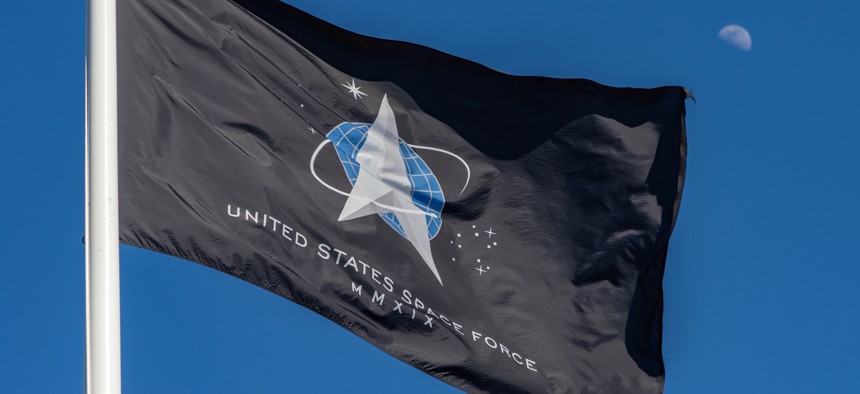How Space Force works to build commercial-first mindset

Gettyimages.com/ Ajax9
As opposed to specific projects, the service branch's Commercial Space Office wants to focus on broader mission areas as it builds an ecosystem around dual-use technologies.
Space Force's mission dates back over several decades, but is the new kid on the block as a customer and that means it can take a unique approach to how it buys products and services.
The approach puts an emphasis on buying commercial offerings whenever possible, one of its senior executives said at our Jan. 19 Power Breakfast on doing business with Space Force.
Jeremy Leader, deputy director of the Commercial Space Office, described it as a “buy rather than build” philosophy.
That focus on so-called “dual-use technologies” is not unique to Space Force, but the service branch is working to be a leading commercial-first organization in government.
“If something is commercially available, we’ll buy it. Why build our own exquisite systems?” Leader said. “It’s been an interesting journey but I’d say we’re at just a few steps on the path and that there’s more coming.”
The impact is broader than what is purchased. A cultural shift is underway especially for acquisition officials and how they approach their jobs, he said.
Acquisition processes have traditions of focusing on requirements and guarding against mission creep.
People are evaluated and graded on those things. But that is changing how acquisition officials should think, according to Leader.
“You actually own a mission area, you don’t own projects,” Leader said. “The mission area focus forces you to look at what’s coming up, what’s being developed, and what’s coming in the future.”
That shift in thinking also requires flexibility to change things as needed.
“Yeah, tech creep is bad, but delivering obsolete systems 10 years late is also very bad,” he said.
Leader outlined several of Space Force's priorities for the coming year: space-based environmental monitoring and weather; training and test environments; and developing an alternative to positioning, navigation and timing.
“Our model emphasizes reverse industry days,” Leader said.
Space Force wants to share its challenges with industry and hear about possible solutions.
“Maybe we didn’t do our requirements right to begin with. Maybe there is something commercially available. Maybe we need to adjust our requirements,” he said. “We need to be open-minded.”
Often these industry days are followed by “challenges,” where industry can work on solutions to a specific problem as a way of showing Space Force what’s possible and what’s new in the commercial marketplace.
Step one for anyone wanting to do business with Space Force is Space Systems Command's Front Door, a portal that facilitates collaboration between industry and Space Force. The portal hosts information about upcoming events such as reverse industry days and advice on how to ask questions or share ideas.
There will always be parts of the space mission where the Defense Department is the only customer. But in other areas such as logistics, DOD could be an anchor tenant along with other commercial users.
“In those areas we want to develop an ecosystem where we’re just one of many customers,” Leader said. “We don’t want to create a barrier to entry.”
NEXT STORY: CIO-SP4 protests withdrawn


